Stats New Zealand’s latest migration data revealed that only 10,628 net overseas migrants landed in the country in the year to August 2025. This migration inflow was well below the decade average of 49,000 and around 120,000 fewer than the late 2023 peak.
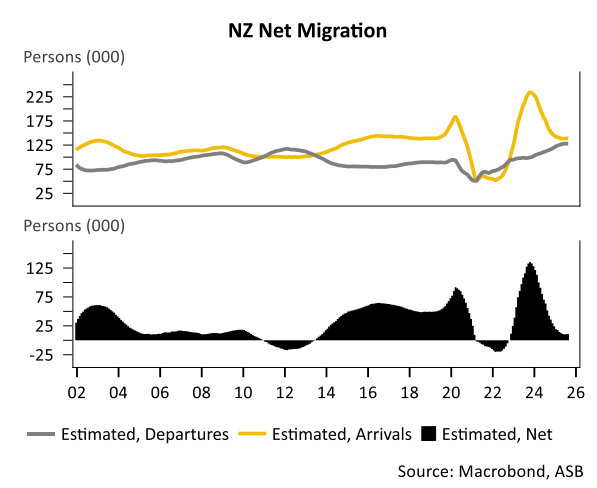
The collapse in net migration has helped drive New Zealand rental growth to unprecedented lows, as illustrated below by Justin Fabo from Antipodean Macro:
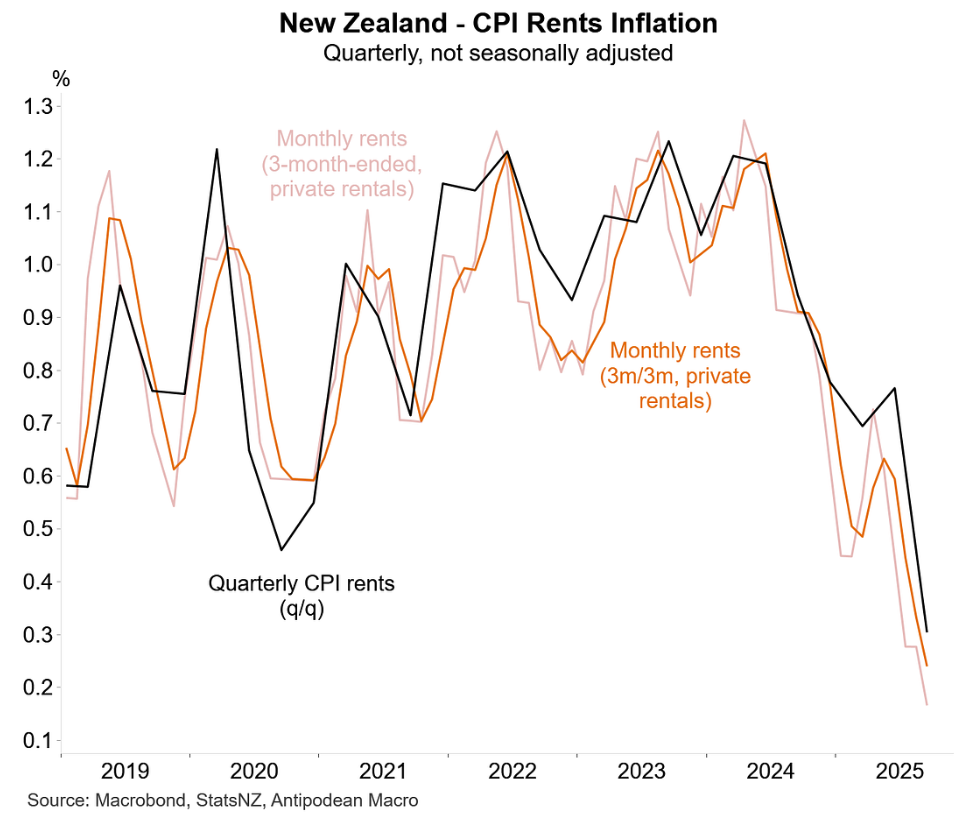
Indeed, the growth in New Zealand’s dwelling stock is significantly outpacing population growth, “keeping downward pressure on rents and housing prices”.
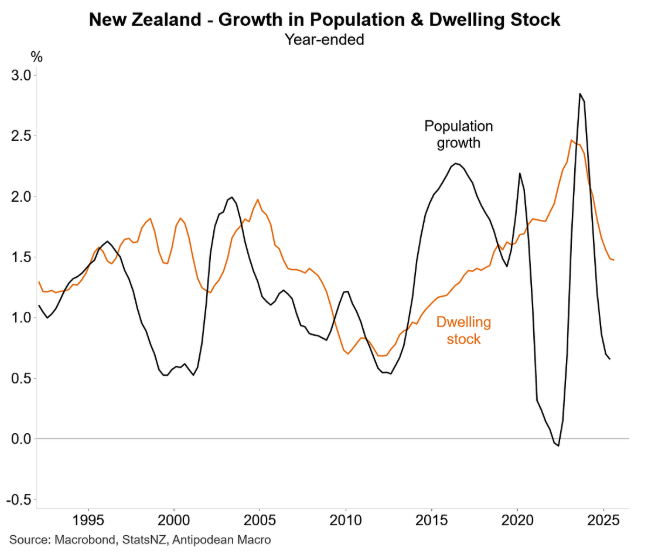
The latest Trade Me rent price index confirms that life is getting significantly easier for New Zealand tenants, with rents nationally declining by 1.6% year-on-year in September amid a 6.3% rise in annual rental listings:
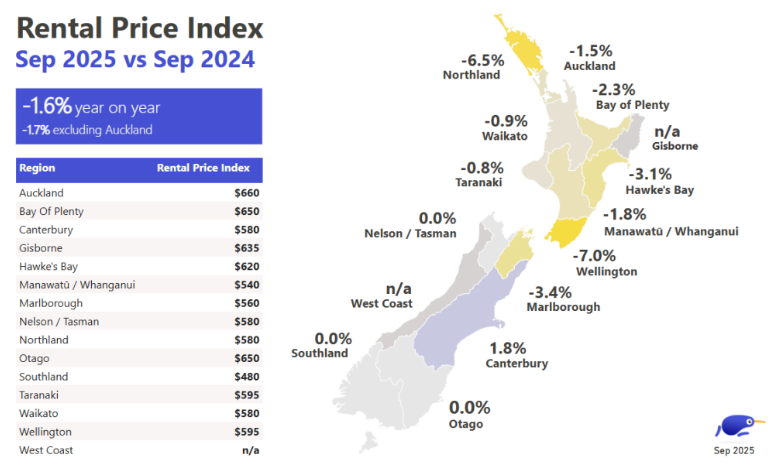
“This increased supply, combined with the marginal overall drop in national searches, suggests the balance of power favours tenants across the motu”, Trade Me Property’s September rent report said.
Separate data from Realestate.co.nz paints a similar picture.
New rental listings were 18.1% higher year-on-year in September, according to Realestate.co.nz, whereas total rental listings were 23.6% higher:
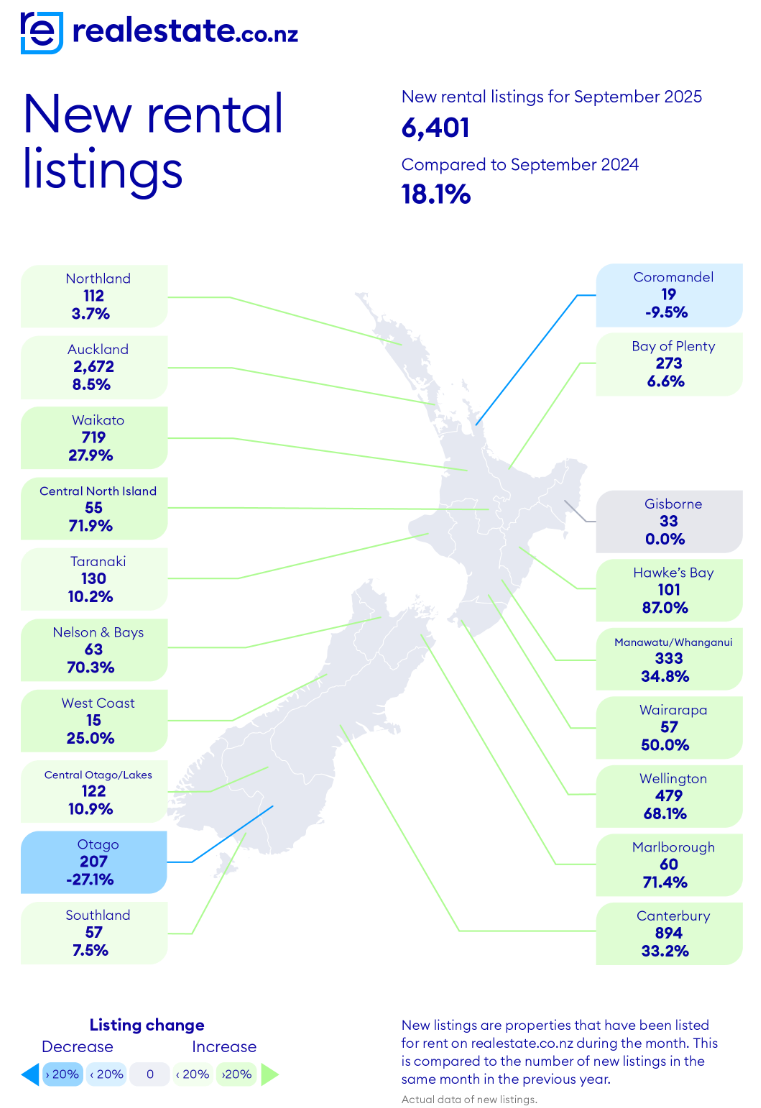
Asking rents across New Zealand also declined by 3.1% over the year to September, according to Realestate.co.nz:
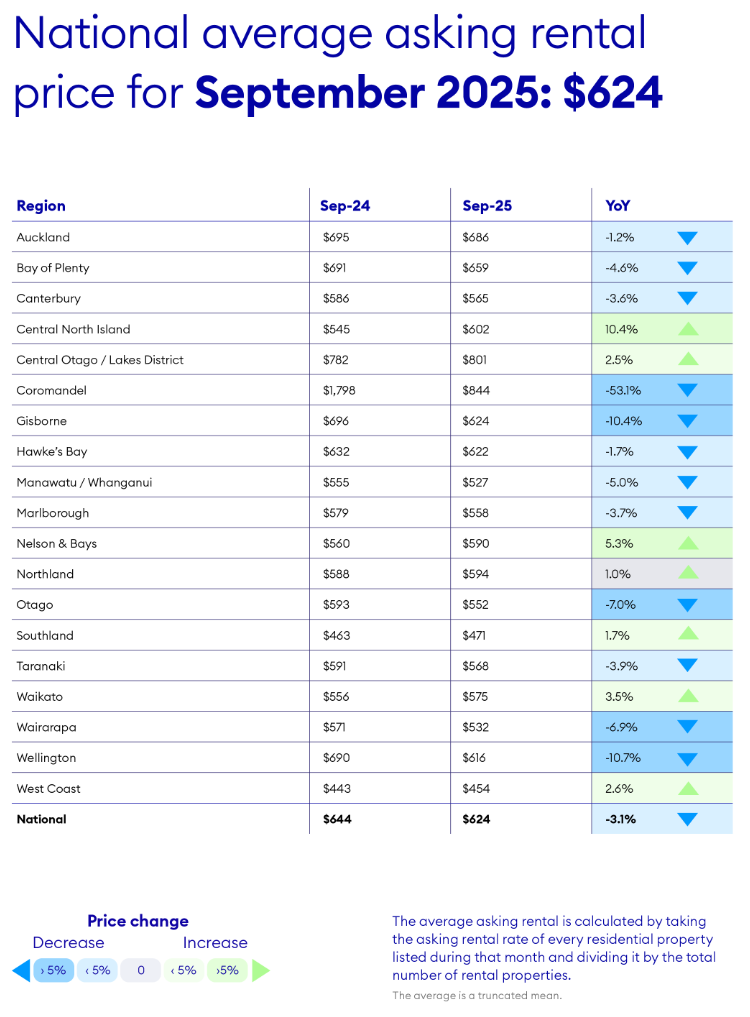
“There’s a lot of choice on the market at present, which makes it a great time for anyone looking to upgrade their rental home or explore a new neighbourhood they might be thinking about purchasing in down the track”, Vanessa Williams, spokesperson for realestate.co.nz, said.
Sadly for Australian tenants, the opposite is occurring. Net permanent and long-term (NPLT) arrivals into Australia have spiked, adding to rental demand.
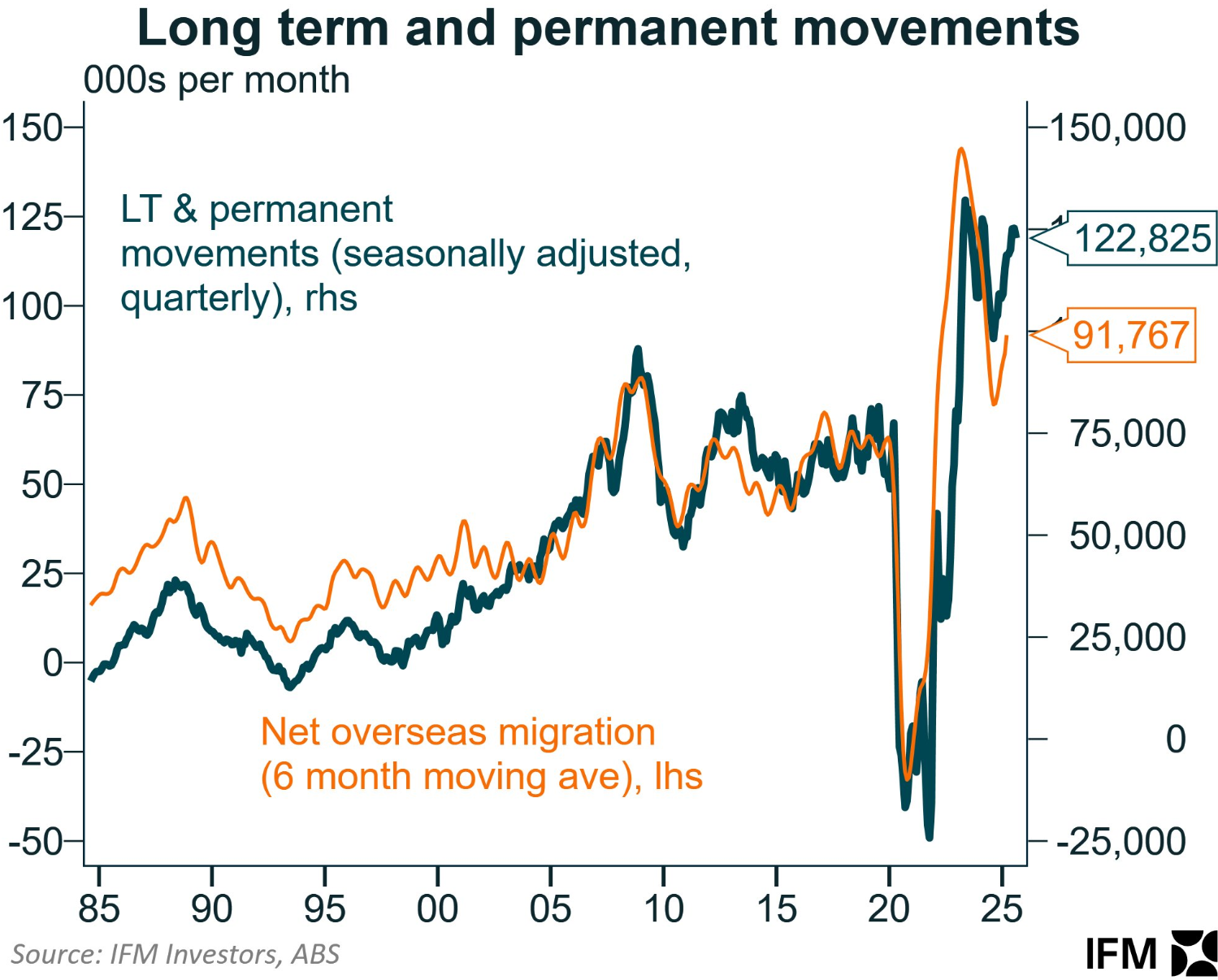
Rental listings across the combined capital cities in Australia have fallen to a record low:
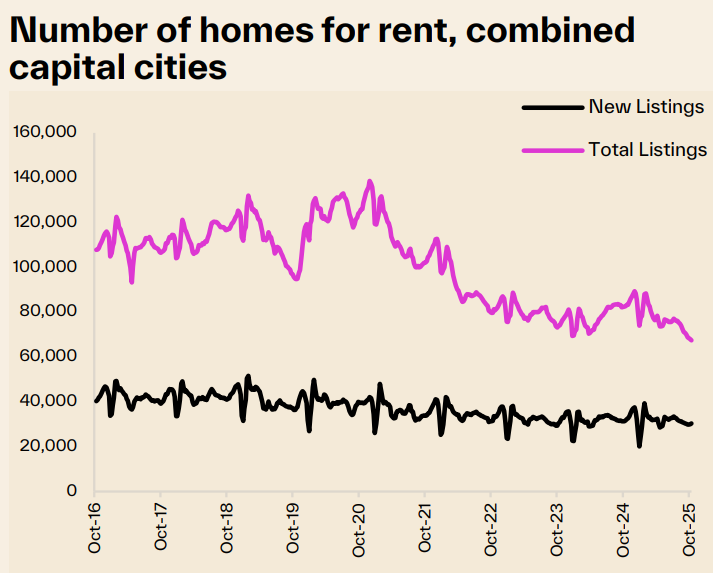
Source: Cotality
As a result, advertised rents, which have already risen by 43.8% over the past five years, are reaccelerating:
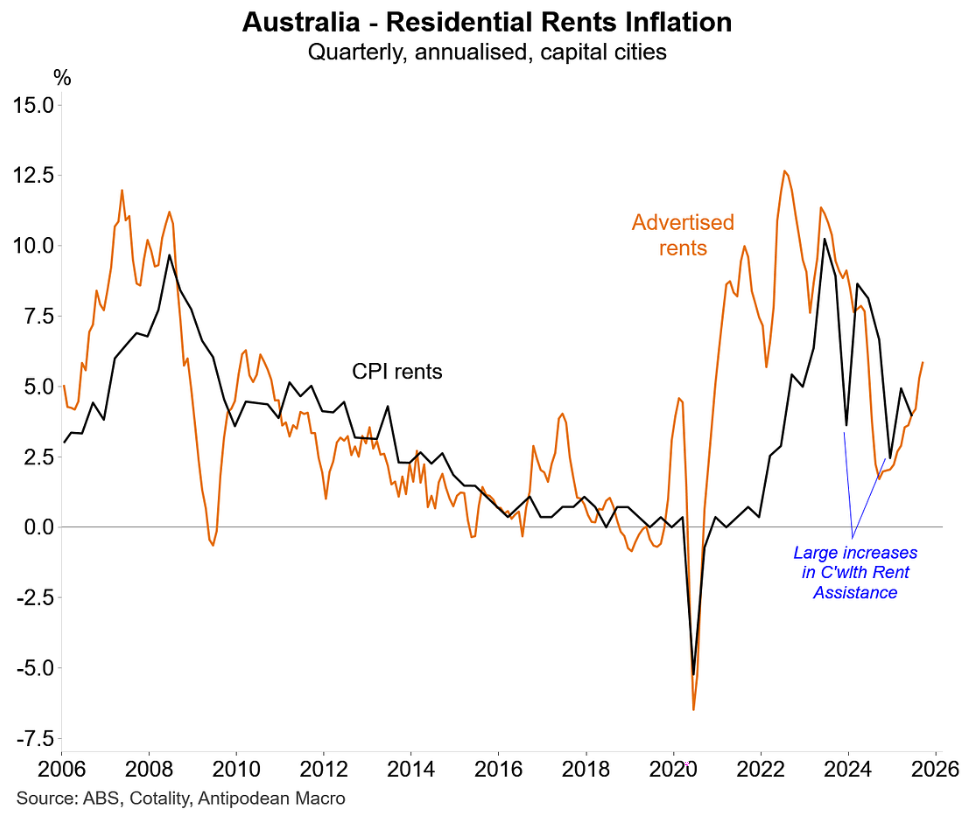
The reality is that Australia’s rental situation will deteriorate so long as immigration demand continues to overrun supply.

